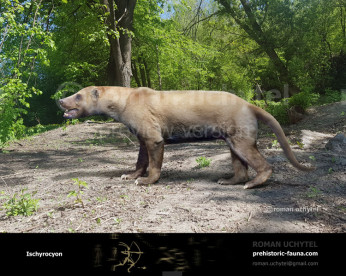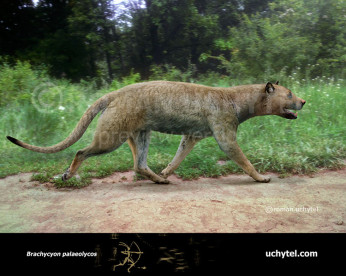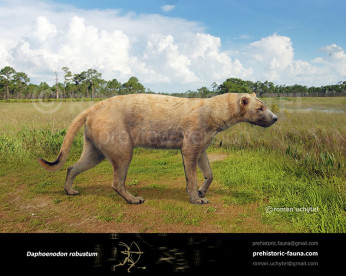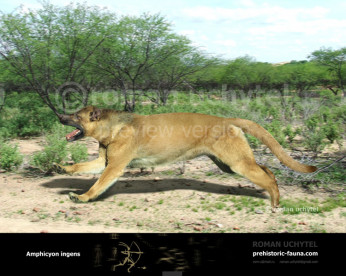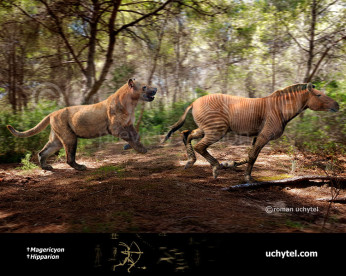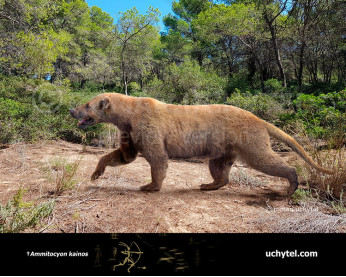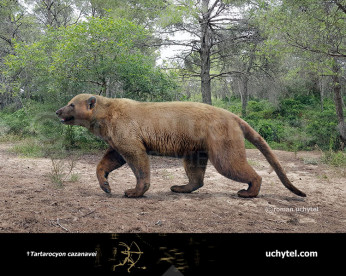Amphicyon major
6565Amphicyon major (Amphicyon major Blainville,1841)
Order: Carnivora
Family: Amphicyonidae
Dimensions: length - 1,8 m, height - 100 сm, weight - 180 kg
Temporal range: during the Late Miocene (Eurasia)
Amphicyon ("ambiguous dog") is an extinct genus of large carnivorous bone-crushing mammals, known as bear-dogs, of the family Amphicyonidae, subfamily Amphicyoninae, from the Aquitanian Epoch until the Tortonian. They ranged over North America, Europe, Asia, and Africa from 20.6—9 Ma ago, existing approximately 11.6 million years. Amphicyon was the typical bear-dog amphicyonid with morphology similar to both bears and dogs. With its robust build and maximum length of 2.5 m, the largest species looked more like a bear than a dog. It had a large heavy tail, thick neck, robust limbs and teeth like a wolf. It was probably an omnivore with a lifestyle comparable to that of the brown bear. Amphicyon major lived from 16.9–9.0 Ma, approximately 7.9 million years. Specimens have been found in across Europe and in western Turkey.
Amphicyon major (Amphicyon major Blainville,1841)
Order: Carnivora
Family: Amphicyonidae
Dimensions: length - 1,8 m, height - 100 сm, weight - 180 kg
Temporal range: during the Late Miocene (Eurasia)
Amphicyon ("ambiguous dog") is an extinct genus of large carnivorous bone-crushing mammals, known as bear-dogs, of the family Amphicyonidae, subfamily Amphicyoninae, from the Aquitanian Epoch until the Tortonian. They ranged over North America, Europe, Asia, and Africa from 20.6—9 Ma ago, existing approximately 11.6 million years. Amphicyon was the typical bear-dog amphicyonid with morphology similar to both bears and dogs. With its robust build and maximum length of 2.5 m, the largest species looked more like a bear than a dog. It had a large heavy tail, thick neck, robust limbs and teeth like a wolf. It was probably an omnivore with a lifestyle comparable to that of the brown bear. Amphicyon major lived from 16.9–9.0 Ma, approximately 7.9 million years. Specimens have been found in across Europe and in western Turkey.

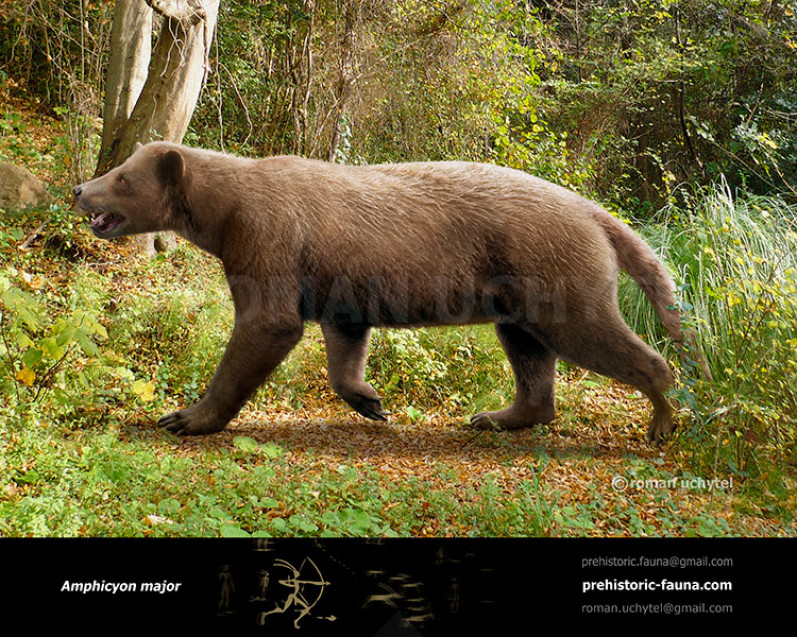
-2010-797x638.jpg)
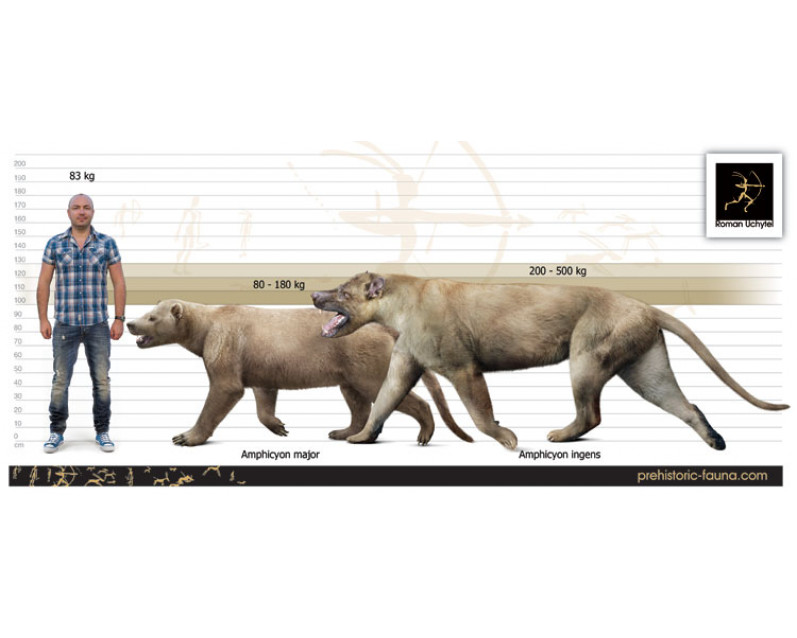

-2010-70x56.jpg)

